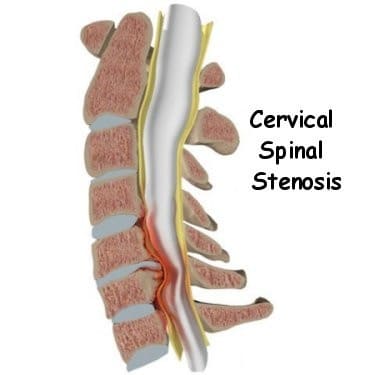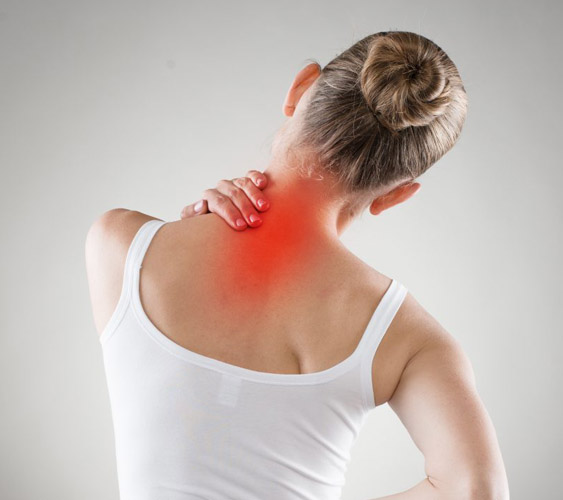Sternocleidomastoid muscle pain: Cause, Symptoms, Treatment, Exercise
When you feel a pain side/front of the neck which pain is like a trigger point pain, it is indicated to be sternocleidomastoid muscle pain.
You also feel the neck tenderness & headaches & also radiate this pain.
Table of Contents
What is the sternocleidomastoid muscle pain?
- The sternocleidomastoid muscle is a large muscle which is located near the front of the neck.
- Pain in this muscle is due to many reasons like poor posture & lifting heavy objects.
- You feel pain like trigger points pain & radiate pain.
- You also feel nausea and dizziness in this muscle pain.
- This pain is reduced by life modification, pain relief drugs, and physiotherapy treatment.
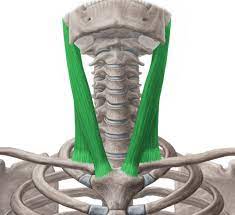
What is the Anatomy of the sternocleidomastoid muscle?
- The sternocleidomastoid muscle is a superficial muscle, which means this muscle is just under the skin, not deep in the neck.
- It is attached to the mastoid process, this mastoid process is a portion of the bone that is located just behind the jaw & under the ear.
- Then this muscle extends down the length of the neck & end of this muscle is where the collarbone & breastbone are connected to each other.
- This sternocleidomastoid muscle helps you with the movement & balance of the head trustee Source.
- This muscle is visible when you move your head from side to side.
- The function of this muscle is the Rotation of the head into the opposite side & obliquely rotating the head & It also flexes the neck.
What are the Causes of sternocleidomastoid muscle pain?
- In most people with sternocleidomastoid, muscle pain develops too slowly due to a combination of lifestyle issues.
- So Poor posture is a possible cause of the sternocleidomastoid muscle pain.
- If occur to Tightness in another part of the body it is produced to referred pain in the SCM.
- If the patient presents with any chronic health conditions, like as asthma,& acute respiratory infections, sinusitis, pneumonia, or bronchitis.
- Other causes of this sternocleidomastoid muscle pain include:
- If you carrying a heavy object, like a child/backpack, in an awkward position.
- Poor posture, for example, when you spend long days hunched over the position of a computer & straining your neck to reach things in the garden.
- If occur to tension & injury in other muscles of the shoulders, neck & back muscle which is leads to muscle pain.
- When you holding a phone for a long time between the ear & shoulder joint.
- If you sleeping in an awkward position for the whole night.
- If you use an uncomfortable pillow while sleeping.
- If you do shallow chest breathing it leads to SCM pain.
- If you wear to tight shirt collar & tie.
- Less frequently, some other factors which are become to cause sternocleidomastoid muscle pain include:
- Trauma:
- A fall, blow to the side of the neck & in a car accident may injure the neck muscles, & which is give to result in strains, sprains & other injuries.
- Arthritis:
- If occur to Arthritis in the spine is referred to as pain in the sternocleidomastoid muscle.
- Arthritis also changes posture & moves the head in a way that increases the risk of injury in the muscle.
- Myofascial pain syndrome:
- In the Myofascial pain syndrome trigger points in a muscle.
- In this syndrome, A person is feel pain which is radiating to other areas when pressing the trigger points of the muscle.
What are Symptoms of the sternocleidomastoid muscle injury?
- Generally, with an injured sternocleidomastoid muscle, you do not feel pain at the site of the injury but you feel the pain that radiates the other areas of the body.
- You feel the ear pain & also present soreness, aching, & sense of fullness in the ear
- You also feel the pain in the face & the front of the head or above the eyes
- The feeling of throat pain during swallowing
- You feel too difficulty holding up the head
- Dizziness & nausea
- You also feel visual disturbances like blurred vision & light appearing dimmed
- Tingling in the face, head & neck
- You feel the headaches
- Pain in the sinuses/nose
- You feel neck stiffness including difficulty rotating the head from side to side.
- You also feel stiffness & tenderness on some points of the area of pain.
Diagnosis of the sternocleidomastoid muscle:
- A doctor starts the diagnosis of a sternocleidomastoid injury by following the assessment.
- First, ask the patient some questions about the symptoms & any recent medical history & activities.
- This part is important for the doctor because depending on the all symptoms, the doctor tries to know about the cause of the injury.
- During the observation, the part doctor observes the swelling or redness & any other skin changes in the area of pain.
- On the palpation, part palpates to swelling, and spasms around the area of pain.
- On the examination check the ROM & strength of the muscle.
- In some cases, Imaging scans are necessary to diagnose details about the muscles & surrounding structures.
- An ultrasound helps the doctor diagnose the trauma in the sternocleidomastoid muscle when an X-ray is ruled out the broken bones.
What is the Treatment for sternocleidomastoid muscle pain?
RICE principle:
In the starting phase of treatment to RICE principle releases pain.
- R- rest = When you feel pain doctor advice you to rest for some time & avoid activities that increase pain.
- I – ice = For release to pain applied to ice on the area of pain for 20 minutes, you are also applied to ice pack & frozen peas for release to pain & swellings.
- C- compression = Applied to compression bandage & cervical collar for release to pain & swellings.
- E – elevation = In this muscle elevation is not possible because for this muscle when to neck is elevated, it increases pain in the muscle.
Pain medication:
- Reduce pain doctor advice to pain relief drugs like non-steroidal anti-inflammatory drugs = NSAID drugs including ibuprofen & naproxen.
- You can also apply volini gel or diclofenac gel for release to pain which is applied to the area of muscle pain.
Do the Lifestyle changes:
- When your posture is bad & carrying heavy objects it produces this muscle pain.
- When you address this issue prevent the pain from getting worse.
- Use to thin pillow for support.
Surgery:
- When the other treatments fail, the doctor advises to you surgery mostly if occurs to sternocleidomastoid muscle ruptures & tears.
Heat & cold packs:
- Hot & cold therapies are a too simple option for treating the pain at home.
- Both therapies are helping to relieve the swelling, reduce pain & relax muscles
- Apply on the heating pad & ice pack which is applied to the affected area for 20 minutes a few times throughout the day.
- When you alternate between the two treatments end with this treatment cold treatment.
What is physiotherapy treatment for sternocleidomastoid muscle pain?
The physiotherapy treatment includes massage, electrotherapy, exercise, stretching, and yoga, which is used to reduce muscle pain, swellings, spasms, tightness & weakness of the neck muscle.
Massage:
- In physiotherapy treatment is also applied to massage the area of pain to release muscle tension & stress.
- This massage is applied to the area of pain with the help of oil &pawder.
- This massage is applied once per week.
- But this massage treatment is given to results for the short-term.
- You are even doing the self-massage on the head, neck & shoulder joints for 10 minutes per day.
Electrotherapy for the sternocleidomastoid muscle pain:
The electrotherapy treatment includes SWD, TENS, IFT & US machines to release the pain & swelling.
- When you feel swellings & tenderness in the area of pain physiotherapist suggests US = ultrasound therapy on this point.
- Reduce pain used to SWD = short wave diathermy, IFT = Interferential Therapy & TENS = transcutaneous electrical nerve stimulation on the area of pain.
- This machine is applied for 10 minutes to the area of muscle pain for pain release.
Stretching for the sternocleidomastoid muscle pain:
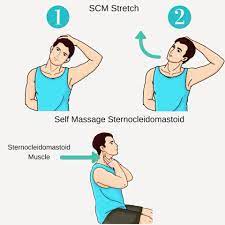
- The patient is located in the Sternocleidomastoid muscle & lightly pinch the muscle down with the 2 fingers then Right where the clavicle is.
- The SCM locates the just turn the head to one side & bring the head forward.
- So that SCM muscle pops out.
- This SCM muscle is run from the Clavicle to the Mastoid process.
- Then put the other hand on the opposite side of the head & bring the ear down to the shoulder joint.
- Make sure to keep holding the SCM muscle on the clavicle with the other hand which increases the stretch.
- Then Tilt the head up to look at the ceiling.
- Use the hand to pull the head back & side to increase this stretch.
- Hold this stretching for at least 30 seconds on each side.
- Then Breathe normally as you do this stretch.
- Do this by stretching both sides of the neck.
- But Do not push into the pain.
- If you feel the pain, then ease off the stretching.
Exercise for the sternocleidomastoid muscle pain:
This exercise is helpful to you reduce pain & weakness.
- Cervical flexion
- Cervical side flexion
- Cervical rotation
- Chin tucks
- Head tilts
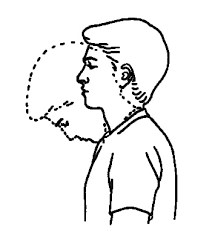
Cervical flexion:
- You are sit upright on a chair for the exercise.
- Then slowly tilt the head forward & back again.
- Repeat this Cervical flexion movement several times means 20 times in 1 session, but keep this exercise steady to avoid additional strain.
- Perform to 3 sessions per day.
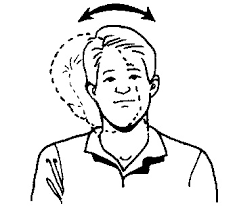
Cervical side flexion:
- You are sitting upright on a chair for the exercise.
- Slowly tilt the head to one side &then the other.
- Repeat this movement 20 times in 1 session but in a controlled manner.
- Perform to 3 sessions per day.
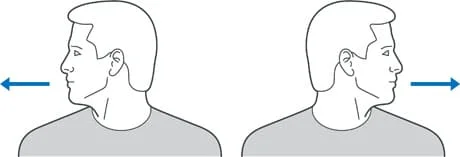
Cervical rotation:
- You are sitting upright on a chair for the exercise.
- Slowly rotate the head to face one side & then the other.
- Repeat this movement 20 times in 1 session only turning the head as far as is comfortable.
- Perform to 3 sessions per day.
Chin tucks:
- You are sitting upright on a chair for the exercise.
- Slowly draw the chin inward while keeping the head straight.
- Do the repetitions 20 in 1 session but steadily avoid straining the neck further.
- Perform to 3 sessions per day.
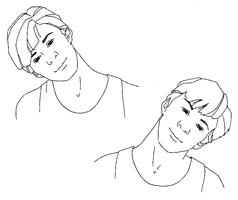
Head tilts:
- You are Sit & stand position to face forward.
- Then Exhale as you slowly tilt the right ear down toward the shoulder joint.
- Use the right hand to apply gentle pressure to the head to deepen the stretch.
- Hold this position for a few breaths then feel the stretch on the side of the neck down to the collarbone.
- On an inhale, return to the starting position.
- Repeat this exercise on the opposite side.
- Do the 10 head tilts on each side.
Yoga for the Sternocleidomastoid muscle pain :
This yoga pose helps you stretch & strengthen the muscles.
- Revolved Triangle
- Upward Plank
Revolved Triangle:
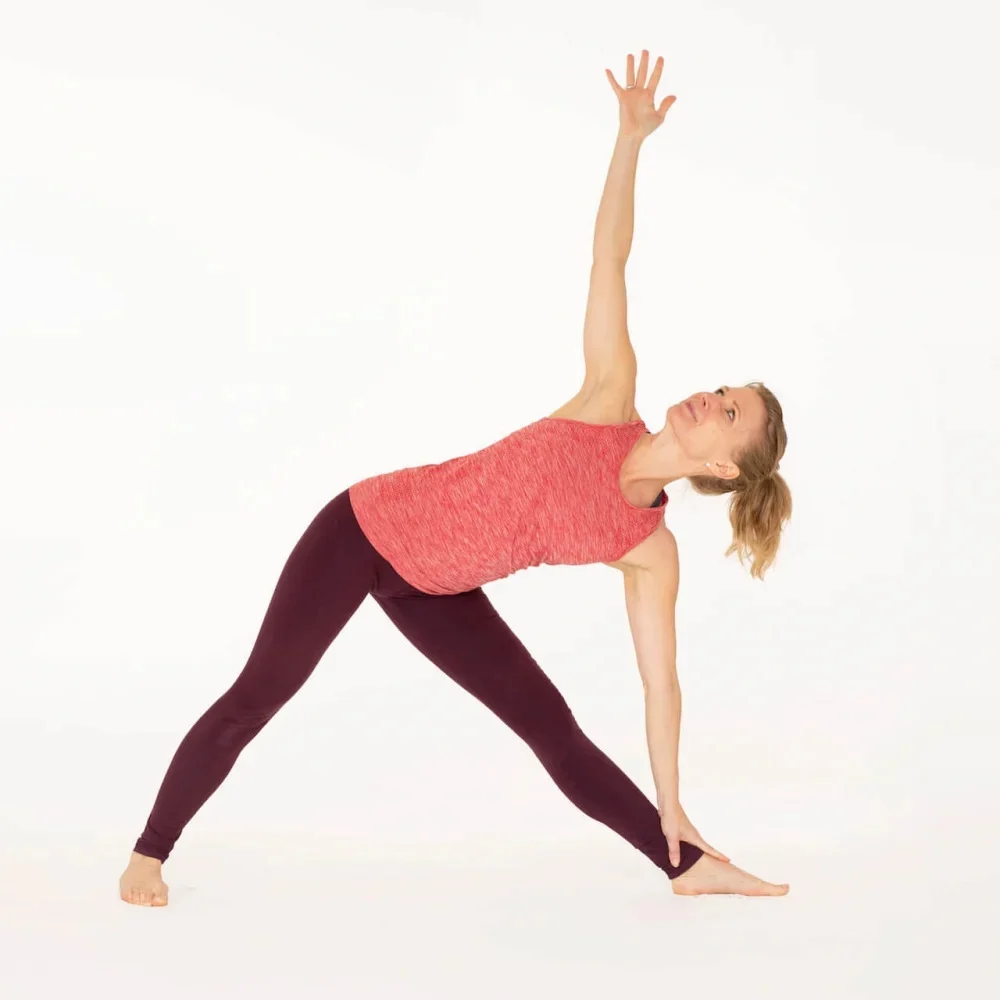
- The patient is Standing with the feet about 4 feet apart.
- Face the right toes forward & left toes out at a slight angle.
- Square the hip joint & face forward in the same direction the right toes are pointing.
- Lift the arms at the sides so that parallel to the floor.
- Then Slowly hinge at the hip joint to fold forward, stopping when the torso is parallel to the floor.
- Bring the left hand toward to leg, the floor & a block, wherever you reach.
- Extend the right arm straight up with the palm facing away from the body.
- Turn the gaze to look up toward the right thumb.
- Exhale to turn the neck to look down at the floor.
- Inhale as they return their gaze upward.
- Must keep the rest of the body stable & continue these neck rotations to stay in the pose for up to 1 minute.
- Then Perform to yoga pose on the opposite side.
Upward Plank:
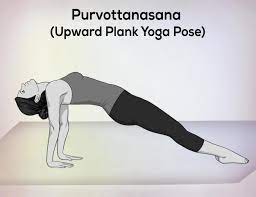
- The patient comes into a seated position with the legs extended in front of you.
- Press the palms into the floor alongside the hip joint.
- Lift the hip joint & bring the feet under the knees.
- Deepen the pose by straightening the legs.
- Open the chest & let the head drop back.
- Hold this yoga pose for up to 30 seconds.
- Do this pose up to 3 times per day.


